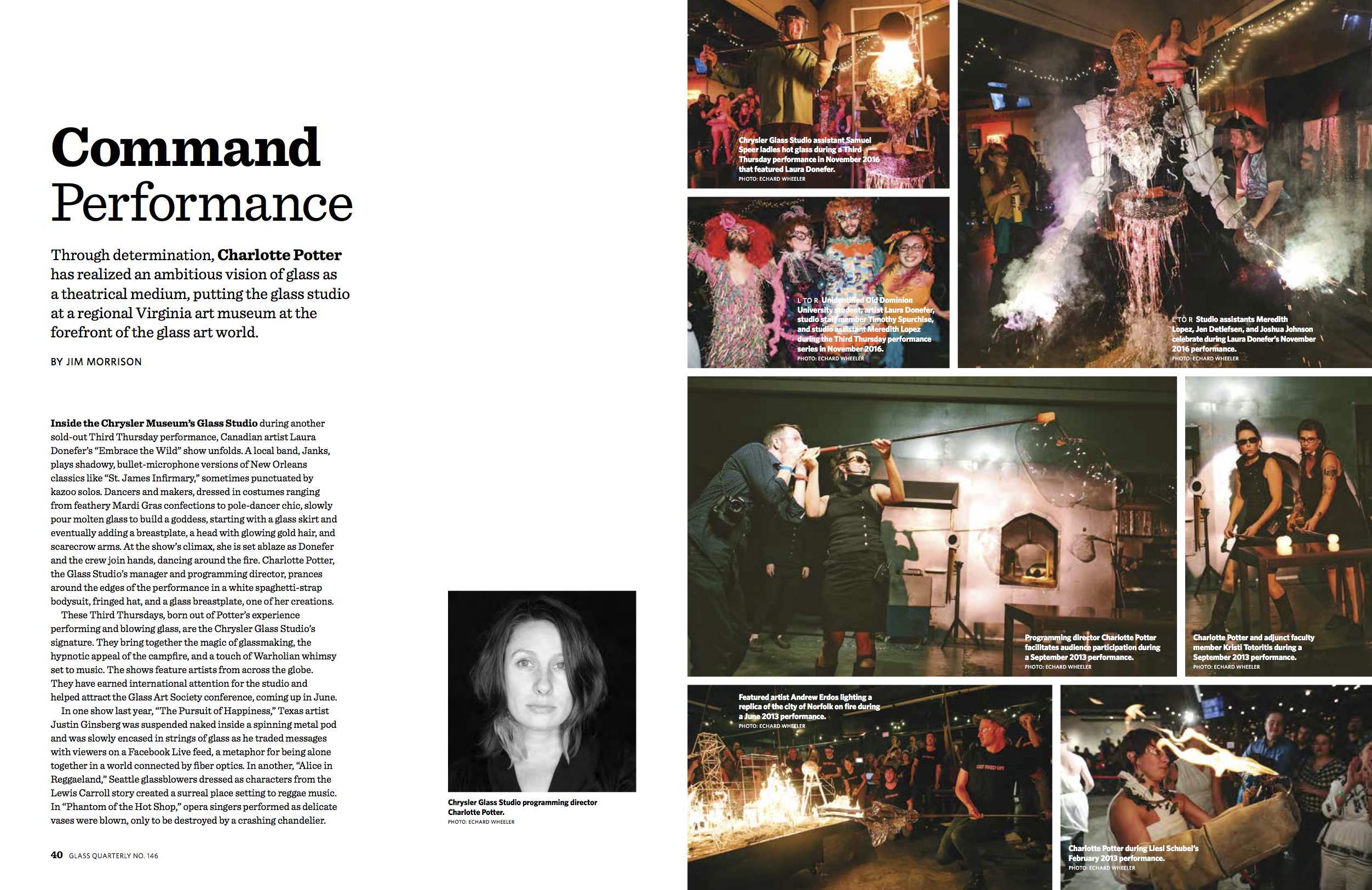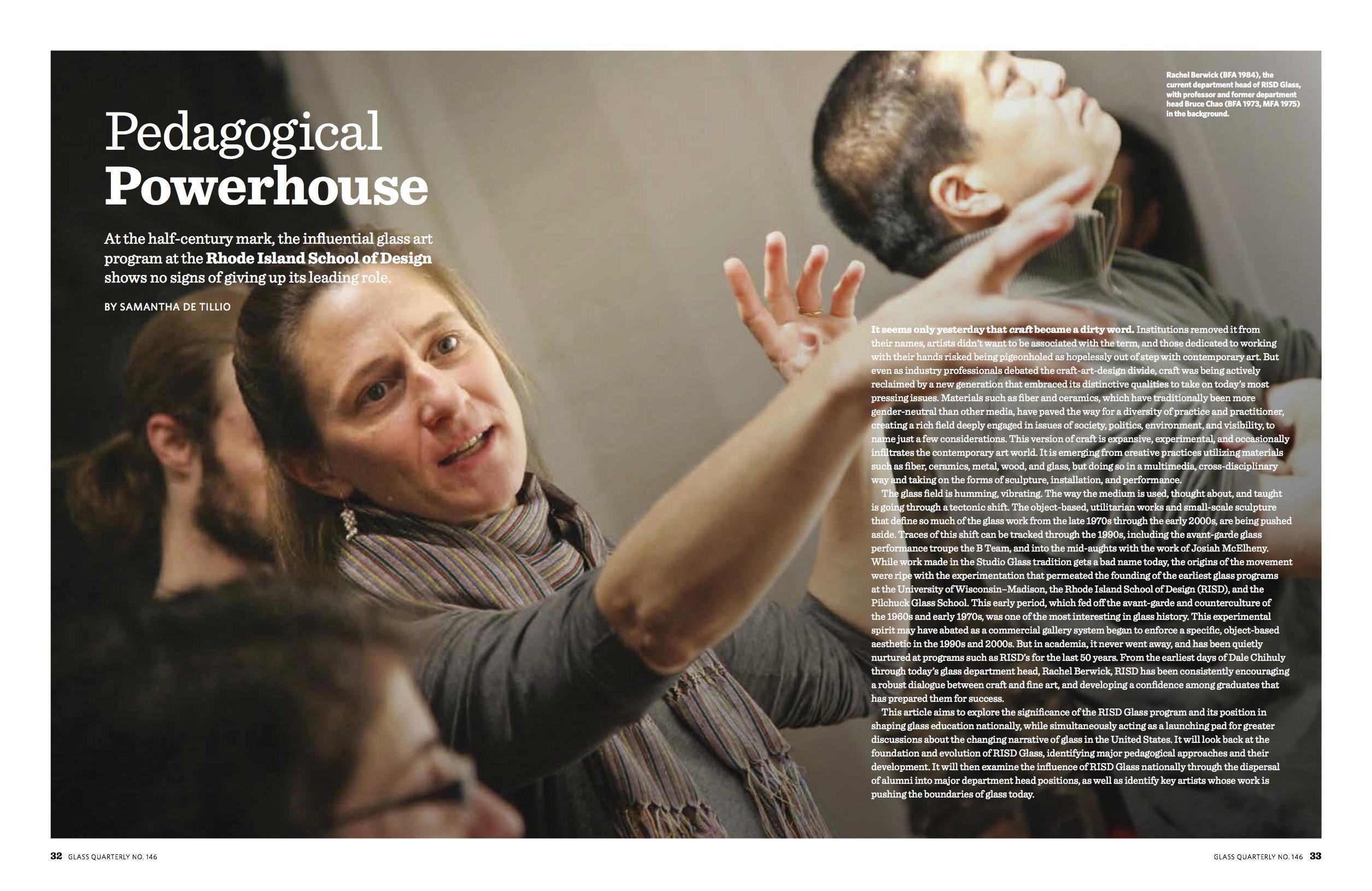The Spring 2017 edition of GLASS: The UrbanGlass Art Quarterly (#146), on its way to newsstands and subscriber mailboxes, sports a new look. Completely redesigned in honor of the 40th anniversary of its parent, UrbanGlass, the new issue features an updated graphic style with fresh type treatments, more abundant white space, and an increase in photographs of individual artists as well as their work. It's the first major update to the magazine's design since 2003 and reflects the keen insights of the magazine’s longtime art directors, Stephanie and John Stislow, who for more than a decade have been honing the visual presentation of articles by some of the top arts writers to illuminate their critical insights.

The feature articles in this issue celebrate innovation. The cover is a detail of one of Stephen Rolfe Powell's stunning new panel series entitled "Zoomers," in which the murrini that had been featured on the surfaces of his oversized blown vessels has moved from a supporting to a starring role in large-format glass panels that threaten to visually overwhelm with complex patterning. GLASS contributing editor William V. Ganis not only traces Rolfe's development of these groundbreaking new techniques, but locates the finished work in art history.
"With their ambiguous space and bright colors, the Zoomers also evoke psychedelia; they have the flowing forms of Wes Wilson gig posters and the illusionistic riddles of Victor Vasarely’s prints," writes Ganis. "Powell’s floating, colorful cylinders peel away into indeterminate space like LSD tracers; he gives permanent form to liquid-light shows."

The story of how the Chrysler Museum of Art glass studio put a regional art museum on the international glass art map is told through a profile of the remarkable Charlotte Potter, whose vision, drive, and determination are chronicled in a detailed feature article by writer Jim Morrison. He writes that the studio's Third Thursday performance events "bring together the magic of glassmaking, the hypnotic appeal of the campfire, and a touch of Warholian whimsy set to music." In a few short years, Potter has brought the coveted Glass Art Society conference to Norfolk, Virginia, where the Chrysler glass studio will be ground zero for the international glass art world this summer.

This issue presents the first chapter of a four-part series looking at the history of UrbanGlass since its founding in 1977. The first installment of this year-long series starts at the beginning, with recent RISD MFA grad Richard Yelle organizing The New York Experimental Glass Workshop in the basement on gritty Great Jones Street. The article seeks to capture the unique energy of New York City in the 1970s, a heady mix of entropy in the form of urban decay and possibility in the flowering of alternative art spaces in lower Manhattan at the time. "It was simply incredible—a completely unique moment," Richard Yelle recalls in the article. "Nothing like this has happened in recent history, where so many organizations sprung out of no place and changed the cultural landscape of the city.”

UrbanGlass is not the only glass institution celebrating a milestone. RISD made much of the glass department's 50th anniversary last fall, and frequent GLASS contributor and Museum of Arts and Design assistant curator Samantha De Tillio takes on the half-century of history sifting for what has given this program such a leading position in the field for so long. As she states in her feature article, De Tillio seeks "to highlight two important aspects of the RISD Glass philosophy: 1) the consideration of glass as a medium, like any other, used in the service of fine arts, and 2) the program’s dual commitment to technical skill and conceptual narrative."

The last feature is an in-depth conversation with Linda MacNeil, whose ambitious jewelry work offers "sculptural ambition in wearable form." The occasion was MacNeil's major retrospective exhibition at the Museum of Glass in Tacoma, curated by Davira Tarigan. MacNeil fields questions on everything from why she often chooses to work with a non-precious material such as glass to how much she identifies with the Studio Glass movement to what current trends in jewelry concern her. "Some of the younger artists are not interested in quality craftsmanship," she says in the interview. "I worry that the basic skill base will be eventually lost in the age of high tech."
These articles, as well as reviews of important recent exhibitions and an in-depth consideration of Koen Vanderstukken's ambitious scholarly work about glass art, are only available to subscribers to the print edition of GLASS.
Be a part of the redesigned and refreshed GLASS magazine: Subscribe and don't miss a single issue.








